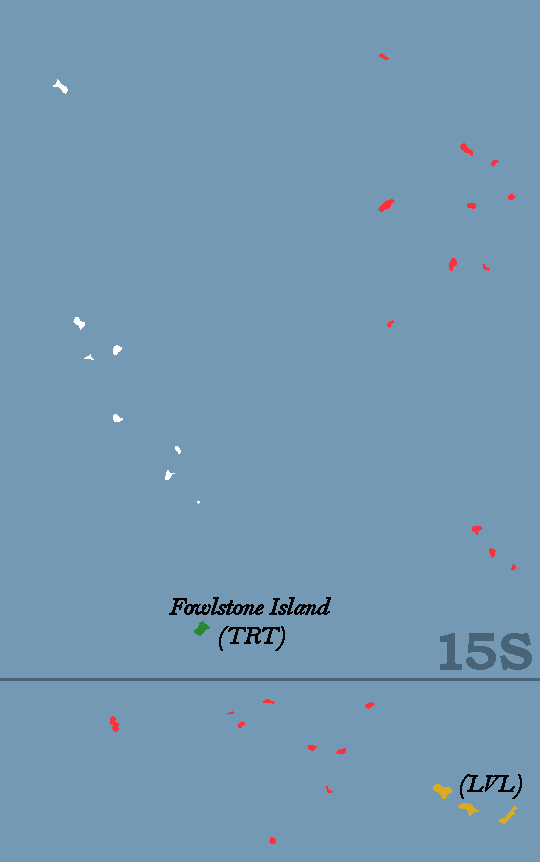**Flag:**
**Nation Name (long):** Federation of Tixinesia
**Nation Name (short):** Tixinesia
**Population:** 629,172
**Total GDP:** $14.172 billion USD
**GDP per Capita:** $22,526
**Currency:** Nui ₦
**Demonym:** Tixinesian
**Language:** To tatou (Tahitian/Official), Staynish (Official) Oan, Ko 'etau (Tongan), O a matou (Samoan)
**Species:** Human
**Religion:** Tevaism, Mauism
**Capital:** Vai’atua
**Largest City:** Vai’atua
**Government Type:** Federal presidential semi-constitutional monarchy
**Leader(s):** President Taaroa III Ari’imaita’i mau taime Aitonui
**Legislature:** Apooraa Teitei
**Two-Letter Code:** FT
**Three-Letter Code:** TIX
**Motto:** Te Paradaiso o te mau Atua
**National Anthem:** Ia Ora ‘O Tixinesia https://www.youtube.com/watch?v=ELhwzszN210
**National Animal(s):** Green Sea Turtle
**National Plant:** Tiare Tixinesia
**Historical Summary:**
The 22 Islands of Tixinesia were first inhabited roughly 2,500 years ago by people who were a part of the culture which originally colonised the Oan Islandes, Polynesian settlers who gradually evolved a distinct and strong ethnic identity, language, and culture as the Tagata, Agaga, and Tokotaha people. The Tagata people inhabit the ‘Aimata Islands in the South and are the most populous of the Federation. The Agaga people live on the four islands in the heart of the Federation known collectively as Mealofa and are the second most populous. Lastly is the Tokotaha people who live in the northern islands of the Federation known as the Hulohula Islands.
The ‘Aimata Islands were the first to be colonised, and quickly established a powerful footing across the South-Central Pacific, and this period of Tagatan expansionism and colonization is known as the Tagata Rahi Empire. From the rule of the first Tagatan king, Taata afa’i mahana, Tagata grew into a regional power. It was a thalassocracy that conquered and controlled unprecedented swathes of the Central Pacific, from parts of the Vakrestrender Islands and the whole of Mealofa and the Hulohula Islands in the North. Tagata Rahi became renowned for its economic, ethnic, and cultural influence over the South-Central Pacific, which remained strong even after the Agaga revolution of the 13th century and Colonial’ discovery of the islands in 1616.
From 1880 to 1962, the islands of Tixinesia had protected-state status under a foreign colonial power. This entity looked after Tixinesia’s foreign affairs under a Treaty of Friendship, but Tixinesia never relinquished its sovereignty to any foreign power. Though a republic, the Federation is an authoritarian state with the Presidency de facto reserved for the Arii i ma’itihia of the ʻAimata Islands and the premiership for the Tu’I of the Hulohula Islands.

